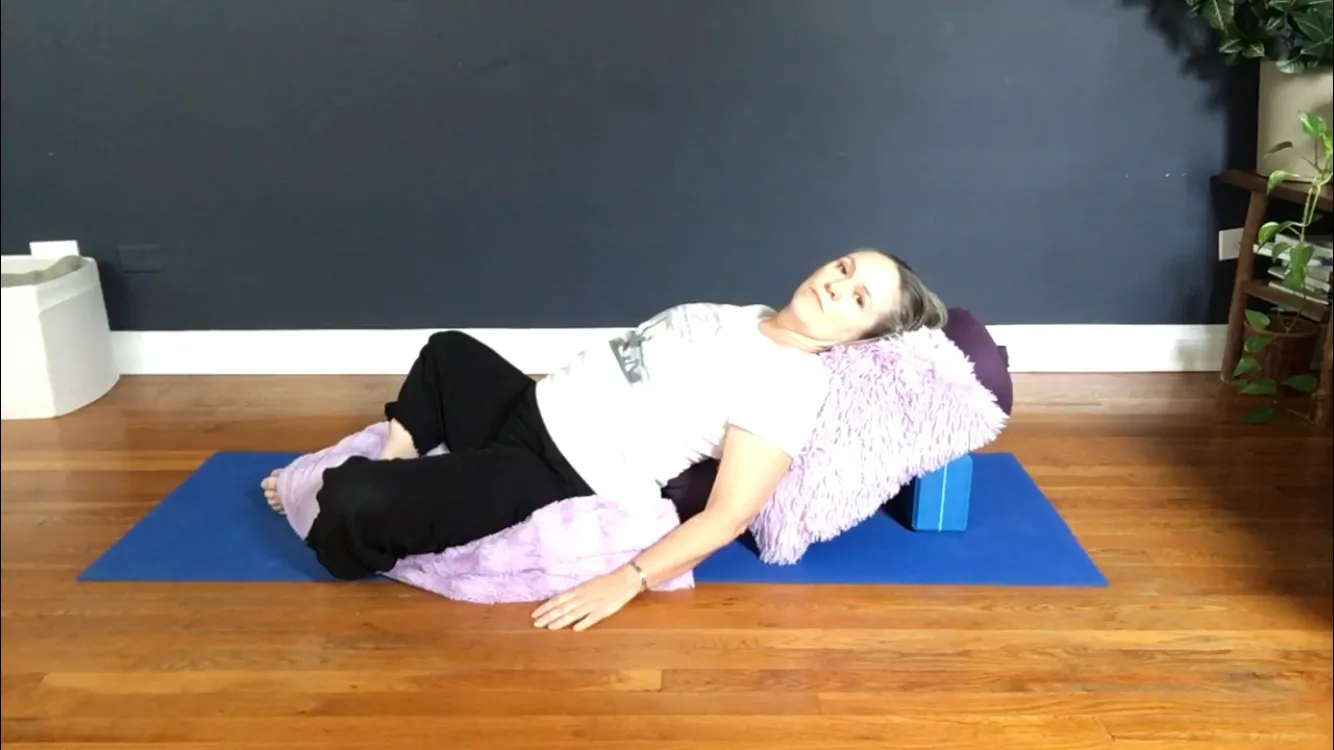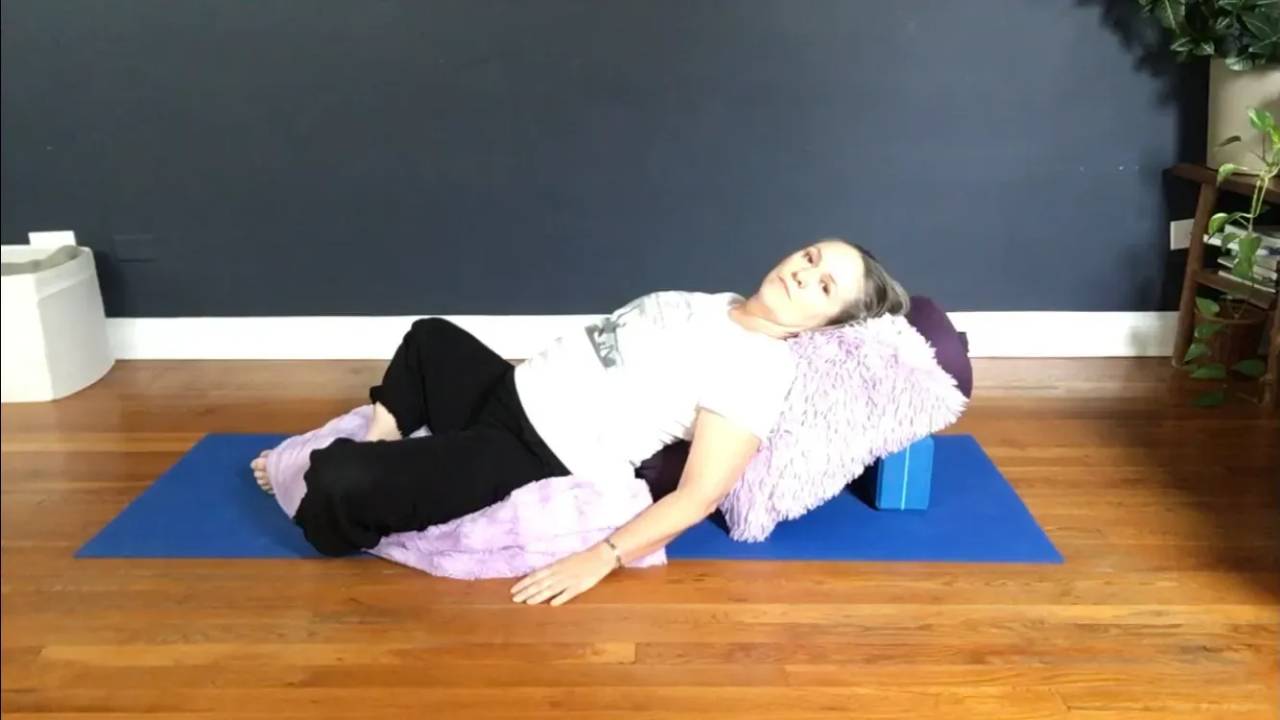
Drop judgement and allow both restlessness and spaciousness this season.
Springtime is about welcoming opportunities for growth. The inherent restlessness we may feel is what gives us the energy to spring clean, to shake things up, get out in nature, and to revise the systems that no longer serve us.
Uneasiness
What if, rather than “should-ing” on ourselves, we create space for our uncertainty and even for uneasiness? Let’s drop our expectations and allow both restlessness and spaciousness. There is no need to judge your mind for doing what it does best: Scanning for danger and what needs to be done.
“It’s a transformative experience to simply pause instead of immediately filling up the space. By waiting, we begin to connect with fundamental restlessness as well as fundamental spaciousness.”
— Pema Chödrön
Restorative Yoga Practice
Gather whatever you have available to create your nest and bring the earth closer around you to support your rest. Bolsters, couch cushions, blankets, rolled towels, blocks... Beanbags or bags of rice can be held in each hand to weigh you down a little.
Set yourself up for Supta Baddha Konasana: Reclined Bound Angle or Supported Butterfly. Have your nest ready before tuning in and warming up. Give each part of your body a place to land, and your mind will eventually follow. A busy mind is not inherently a problem, because you don’t need to identify with your mind.
Breathe
Pranayama will connect you to the spaciousness within. Practice Dirga Pranayama — 3 Part Breath. Gently fill your belly first, then waist and chest on your inhale. On your exhale, deflate chest, then waist, then belly.
Warm up your joints, then rest back into the first posture:
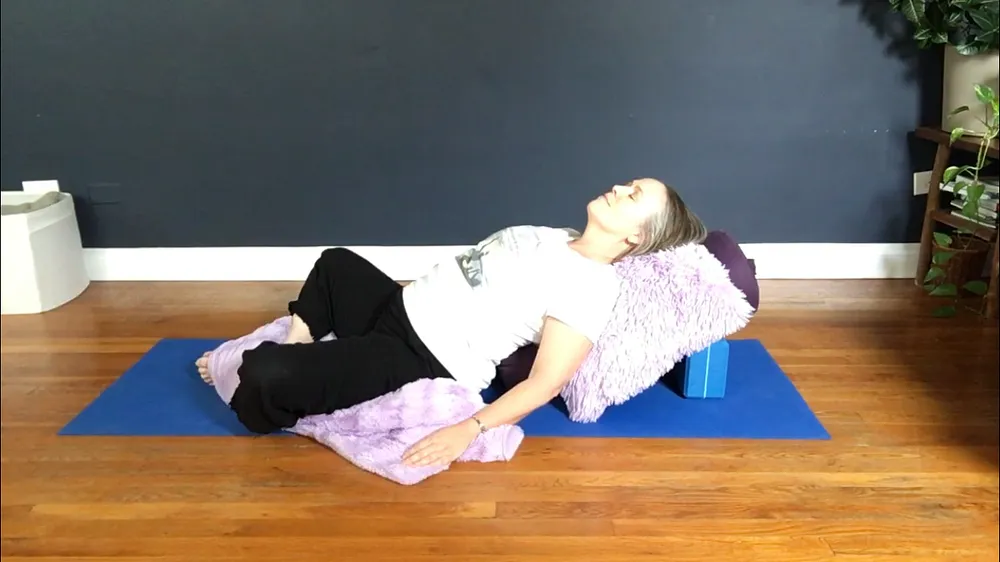 Lie Back
Lie Back
Supta Baddha Konasana. Take the soles of your feet together, knees apart, with lots of padding. Lay back over a bolster placed on an angle. Couch cushions work well for this. Feel that you have landed.
Hum
In this position, practice Brahmari — Humming Breath — to encourage Pratyahara — sense withdrawal. You can choose to turn deeper inward by closing your eyes, plugging your ears with your thumbs, then gently draping your remaining fingers over your face. Relax your elbows.
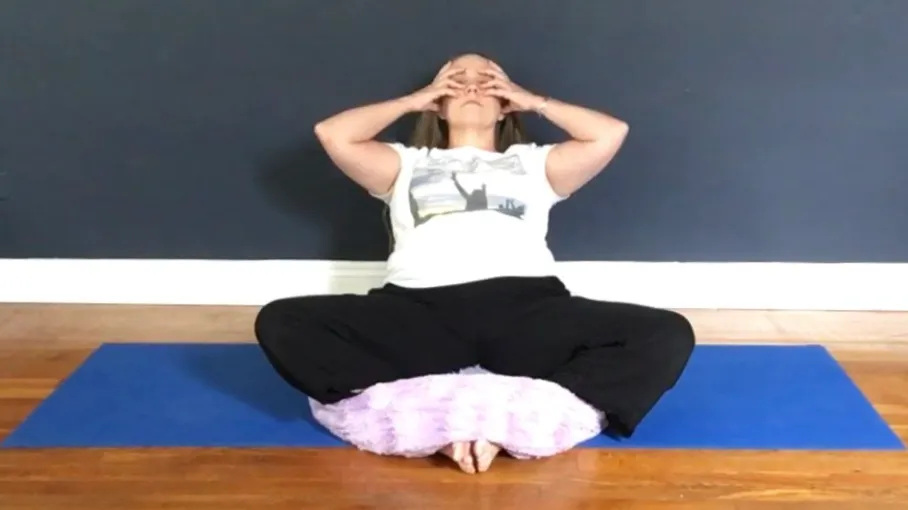 When you have completed several rounds of Humming Breath, let your arms rest and return to a natural breath. You may want to hold your bean bags in your hands and/or cover your eyes with a folded washcloth or eye mask. Don’t worry about your mind’s busyness. Keep inviting it back. Allow your mind to get bored.
When you have completed several rounds of Humming Breath, let your arms rest and return to a natural breath. You may want to hold your bean bags in your hands and/or cover your eyes with a folded washcloth or eye mask. Don’t worry about your mind’s busyness. Keep inviting it back. Allow your mind to get bored.
Mindfulness gives us a place to land. Eventually, your mind will follow your body into stillness, but it won’t happen instantly. Stay 5–10 minutes here.
Twist
The next posture is a Supported Belly Down Twist or Salamba Bharadvajasana. Side Lying is a great alternative. Send breath to the back of your body. Feel the support under you for 3–5 minutes on each side.
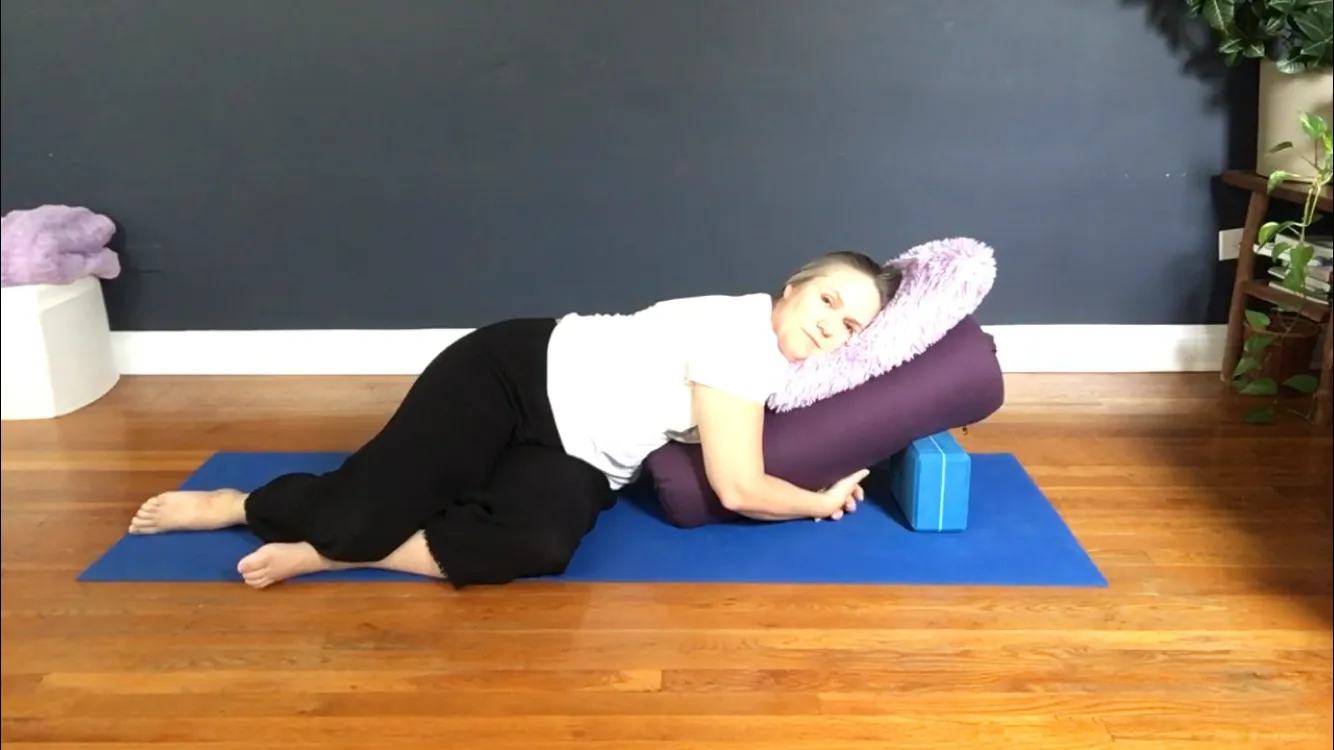
Rest
Finish with Stonehenge, or any supported legs up position — Viparita Karani. You can use blocks, a bolster or a couch. Receive Yoga Nidra — deep rest. You can listen to an audio recording guiding you or simply rest for at least 10–20 minutes.
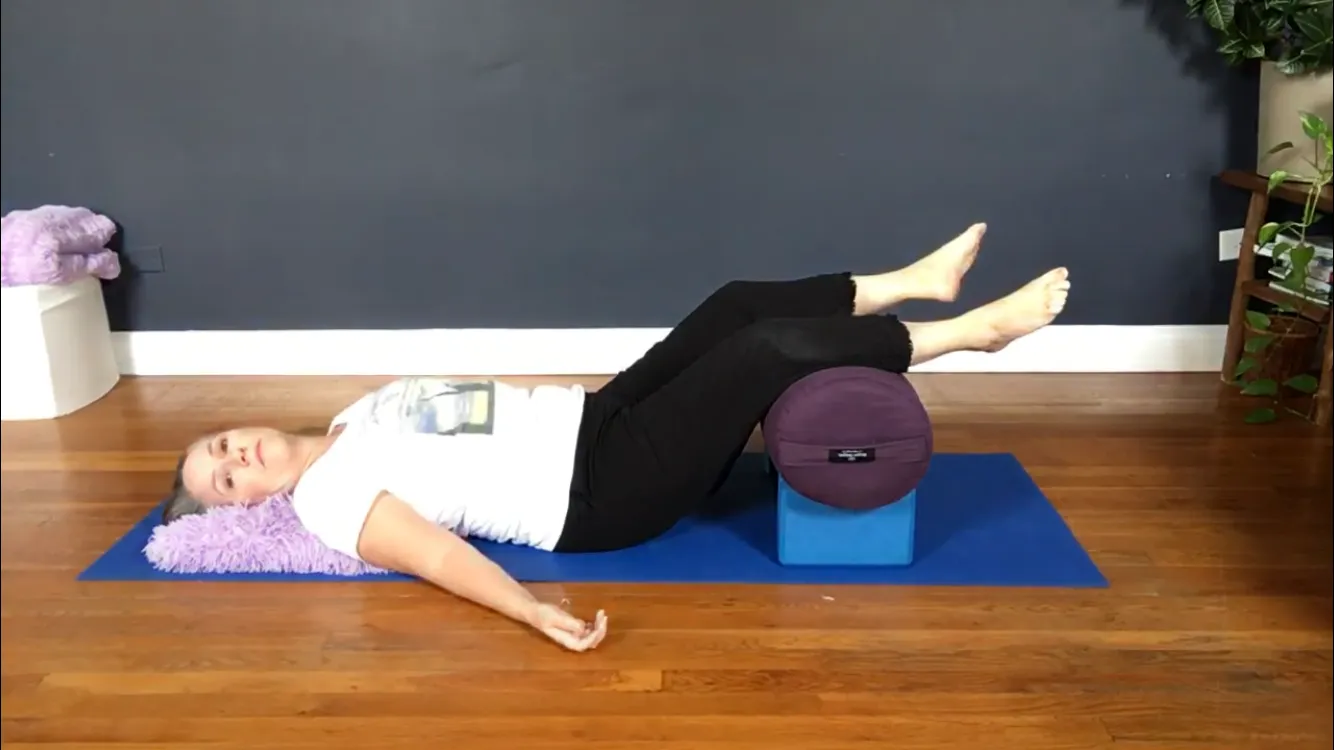
Create an intention aligned with the season and with your needs. Repeat that intention to yourself. Opportunities for growth may arise like little shoots after winter’s stillness.
I always end my practice by chanting Om Shanti to honor the lineage of yoga and invite peace, both inner and outer.
Conclusion
I hope this restorative yoga practice gives you an appreciation of the inherent restlessness and uncertainty that is always present — maybe a bit more in the springtime. Mindfulness and relaxation can help us coax our minds to pause. Wait, rather than filling up the space. See what is already here.
As Pema Chödrön says,
“By waiting, we begin to connect with fundamental restlessness as well as fundamental spaciousness.”
Originally Published in 'Change Your Mind, Change Your Life'
Stop Walking On Eggshells!
Gentle yoga to release your stress and shift your mindset about struggle.
If you get your buttons pushed often by other people's issues, you may be hypervigilant. You might feel it in your body as clenching, tension, or chronic pain.
You'll become more grounded in awareness of your body.

